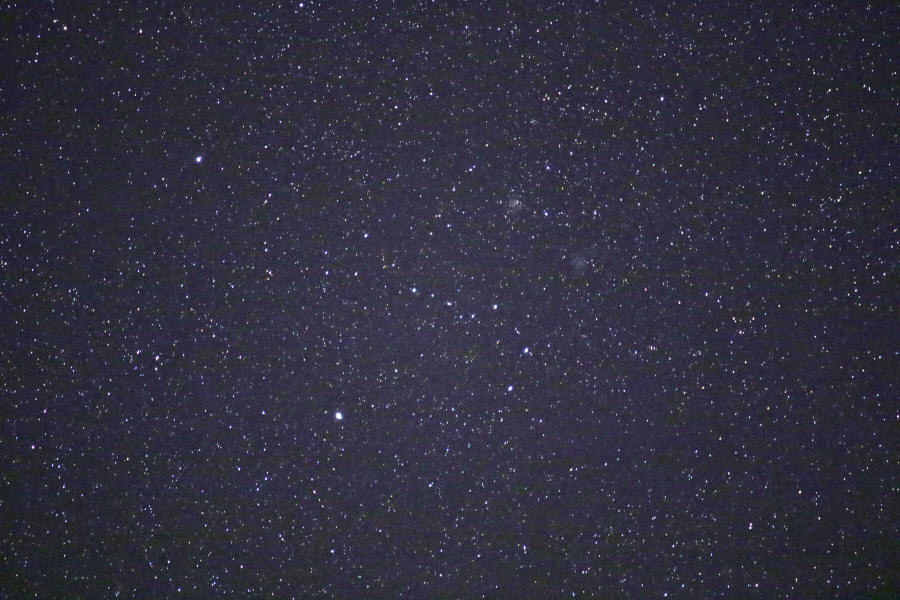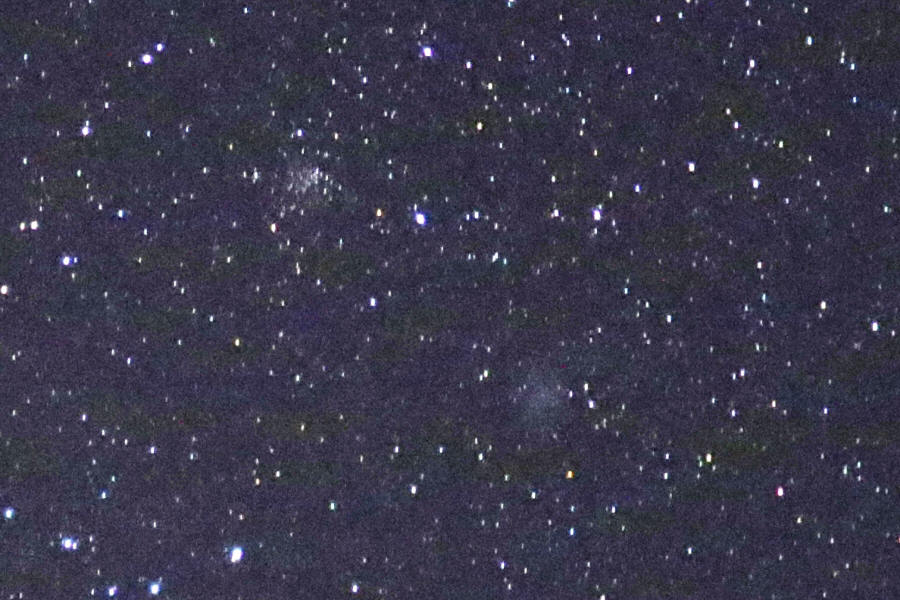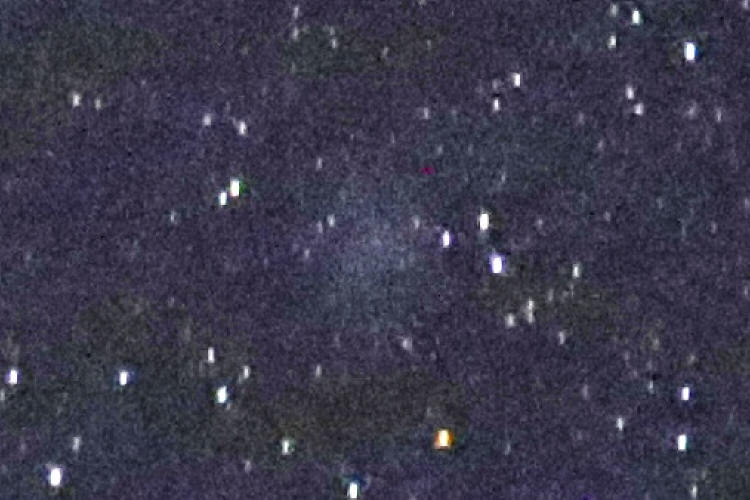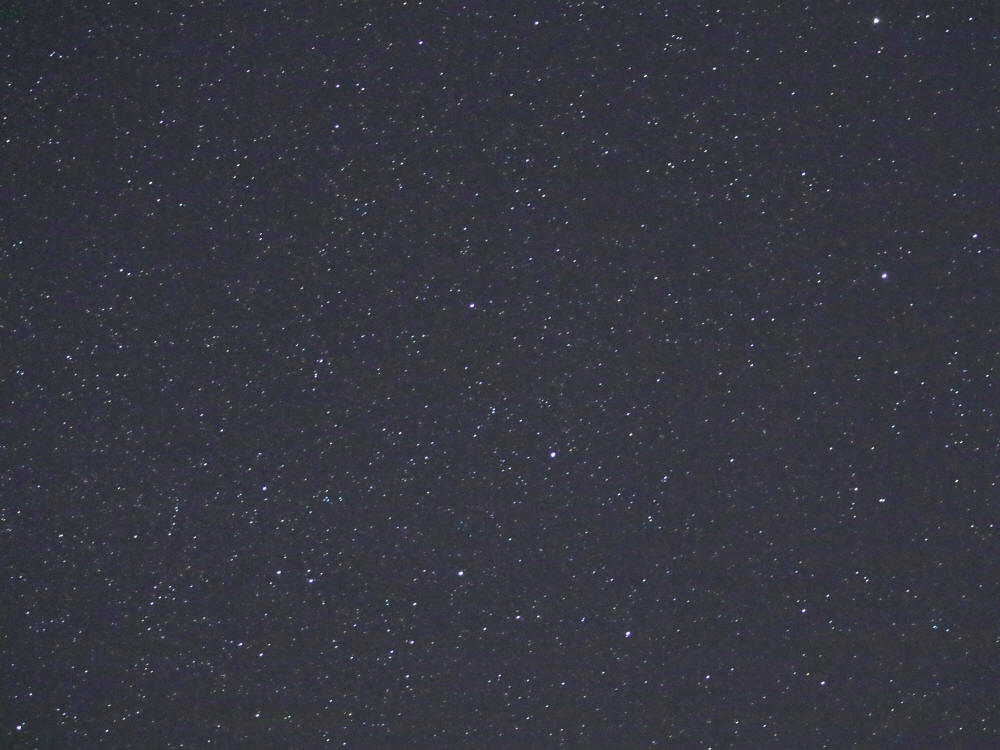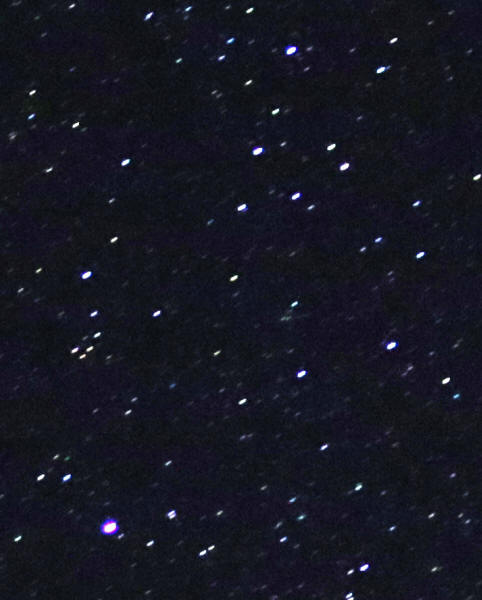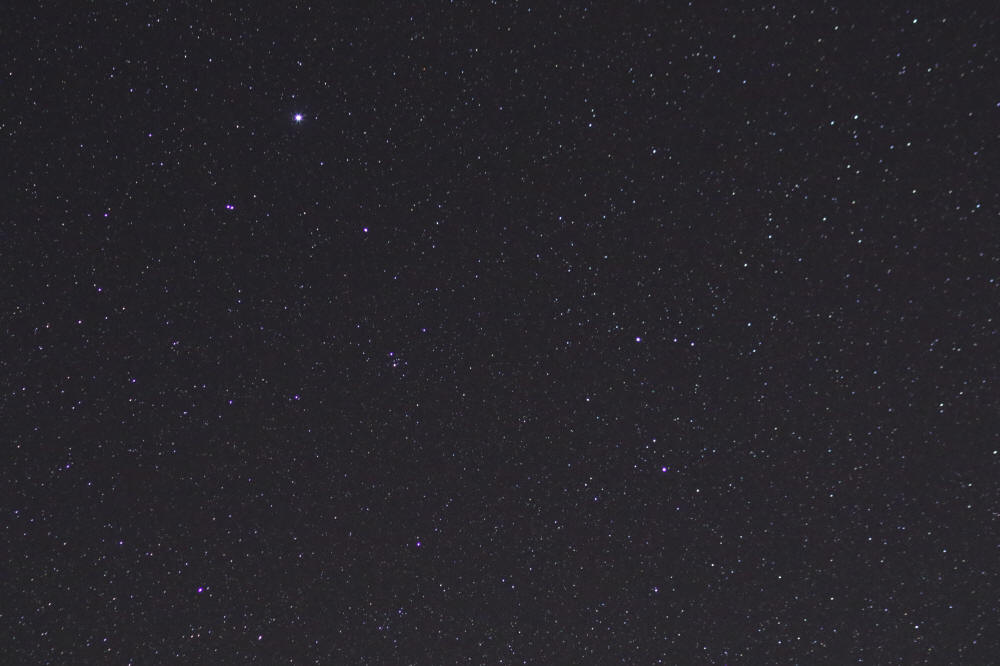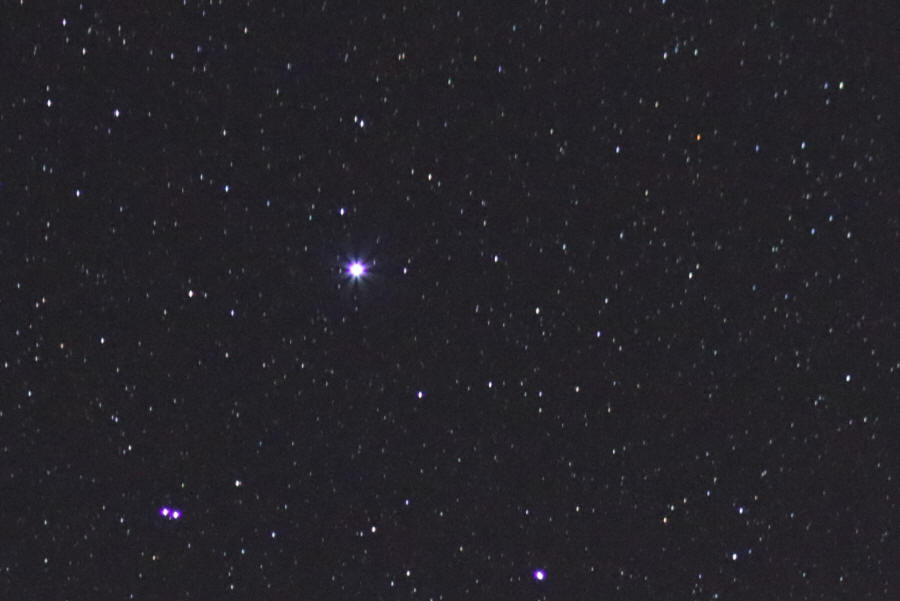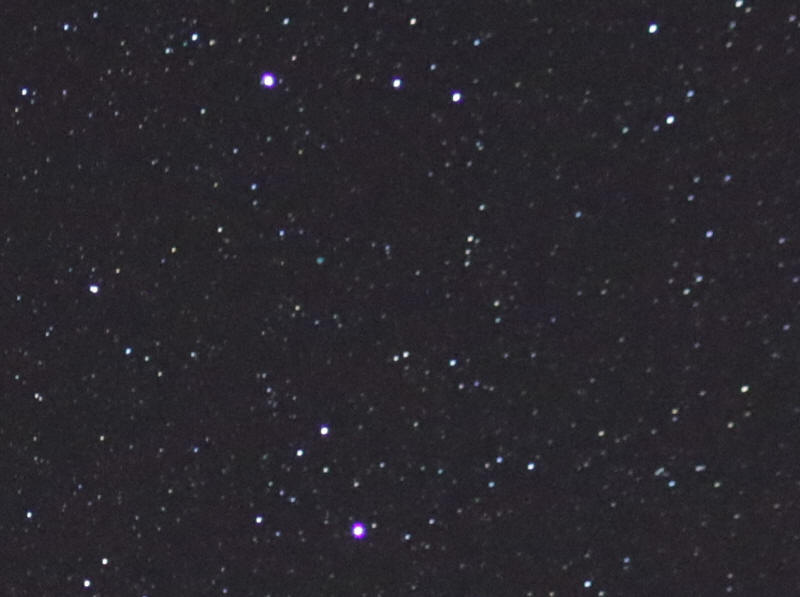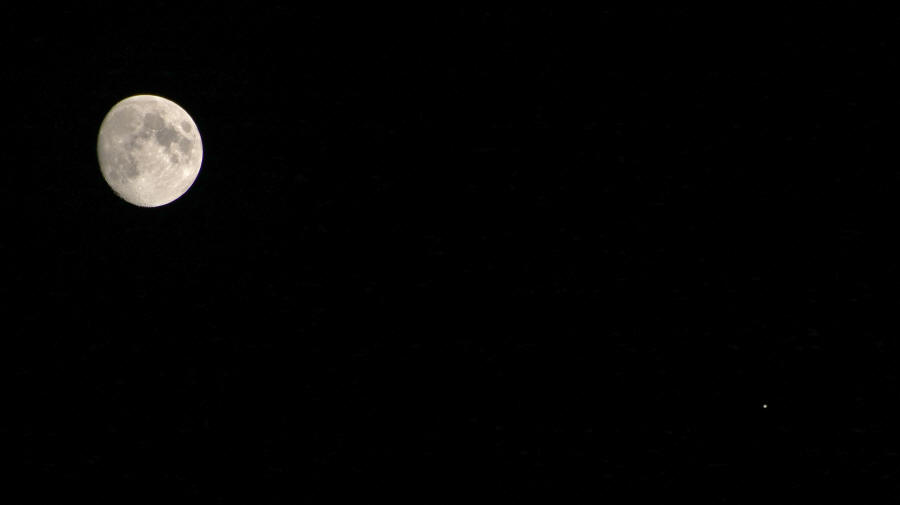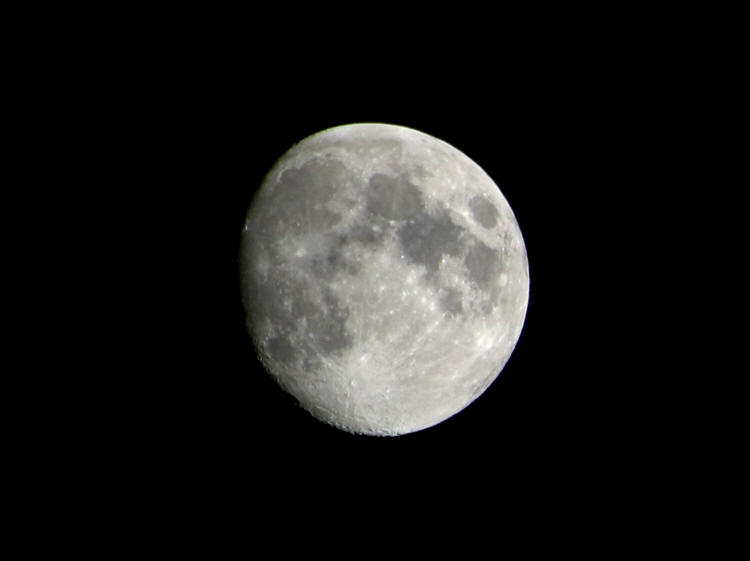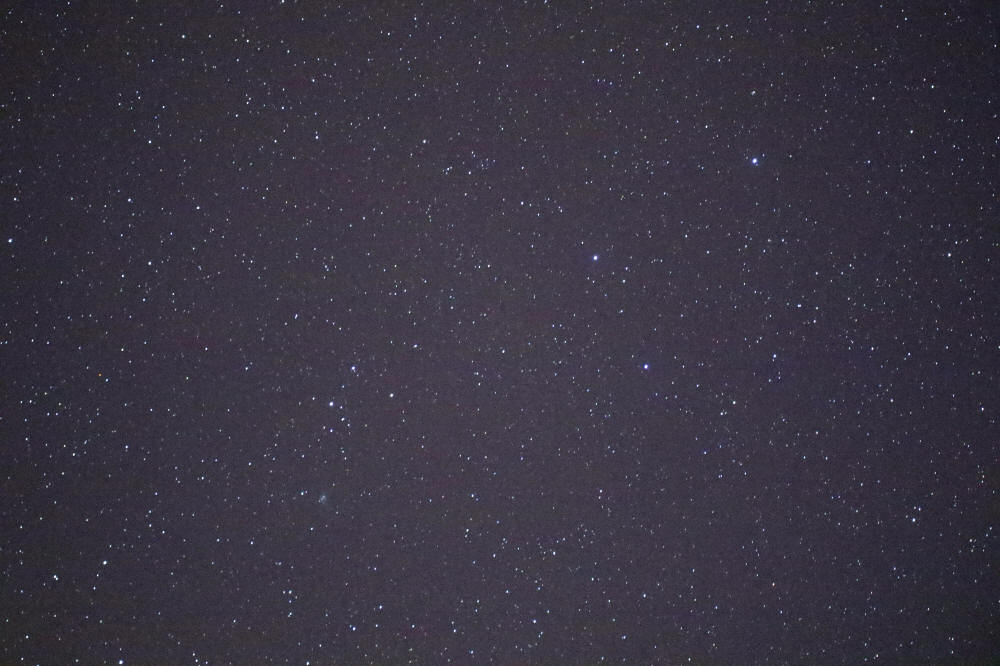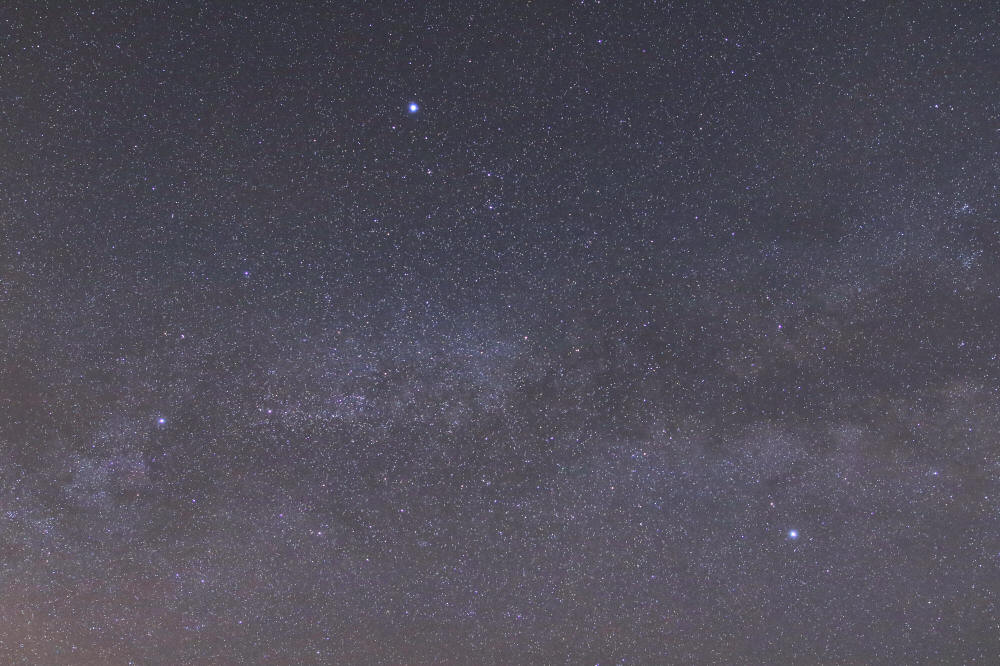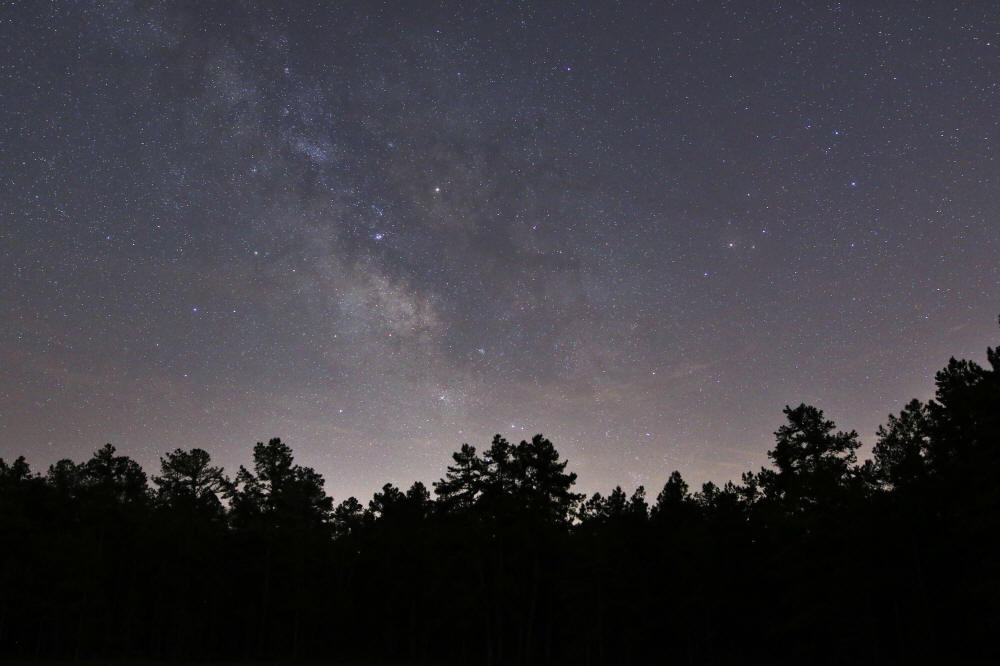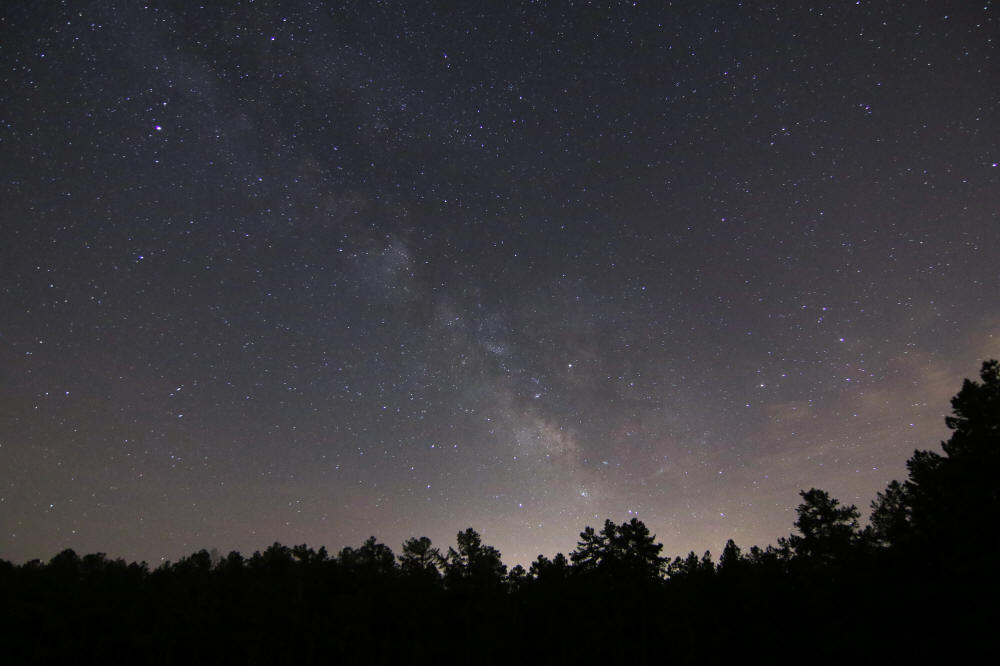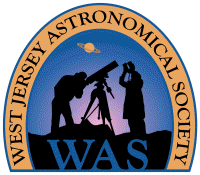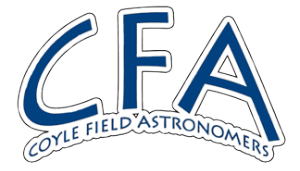Supernova 2017eaw in NGC 6946
May 21, 2017
On May 21, 2017, during the West Jersey Astronomical Society's Public Star Watch at Batsto in Wharton State Forest, NJ, I was able to spot Supernova 2017eaw in the galaxy NGC 6946 at 12:45 am EDT with a 13.1-inch, f/4.5 Newtonian and a 9 mm Nagler eyepiece, yielding 166x. Based on the reported observations at the AAVSO, SN 2017eaw was about magnitude 12.8 at the time. The image above is a single frame captured at 1:10 am with a Canon 7D Mark II digital SLR camera and a Canon 70 to 200 mm f/2.8L zoom lens (on a fixed tripod) set to 200 mm focal length. It was exposed 4 seconds at f/2.8, ISO 6400 and 3600K white balance. Mouseover for labels.
The image below is a magnifying crop of the area from the image above showing open cluster NGC 6939 and galaxy NGC 6946 with the supernova. Mouseover for labels.
Here's an even closer (and very noisey) crop of galaxy NGC 6946 with the supernova (same original image as above). The small-scale patterns used to visually pinpoint the SN in the scope are connected with blue lines on mouseover (here's a negative of the labeled version for printing). V778 Cygni, with a noticeably reddish color, is a silicate carbon star, a carbon star that shows circumstellar silicate dust features.
Barnard's Star
May 21, 2017
While at Batsto for the May 20, 2017, WAS Public Star Watch, Barnard's Star was observed. Located in Ophiuchus, near the obsolete constellation Taurus Poniatovii, this red dwarf is interesting because it has the greatest proper motion of any star at 10.3"/year, in large measure because it's just 6 light years away. This picture was captured at 1:19 am EDT on May 21, 2017, with a Canon 7D Mark II digital SLR camera and a Canon 70 to 200 mm f/2.8L zoom lens (on a fixed tripod) set to 135 mm focal length, then mildly cropped. It was exposed 4 seconds at f/2.8, ISO 3200 and 3600K white balance. Mouseover for labels.
The position of Barnard's Star matches well with the position indicated on charts generated with SkyTools and Stellarium, but I found that the position generated with SkySafari Pro (versions 4 & 5) on my iPhone did not match the telescopic eyepiece view. In brief, SkyTools and Stellarium (and perhaps other planetarium programs that I do not have) update the position based on the date of the chart, which can result in a significant movement because of the high proper motion of Barnard's Star. Since the year 2000, it has moved almost 3 arc minutes north, but the Sky Safari chart shows no indication of that movement. In the set of images below, compare the magnified crop of the original picture above with screen captures from SkyTools and SkySafari, both set for the summer of 2017. Mouseover for labels.
Magnifying Crop from the Original Image Above (taken in 2017)
|
Screen Capture from SkyTools 3 Pro (set to 2017) The position of Barnard's Star matches the image above. |
Screen Capture from SkySafari Pro 5 (set to 2017) Barnard's Star is in the year 2000 position, so it does not match. |
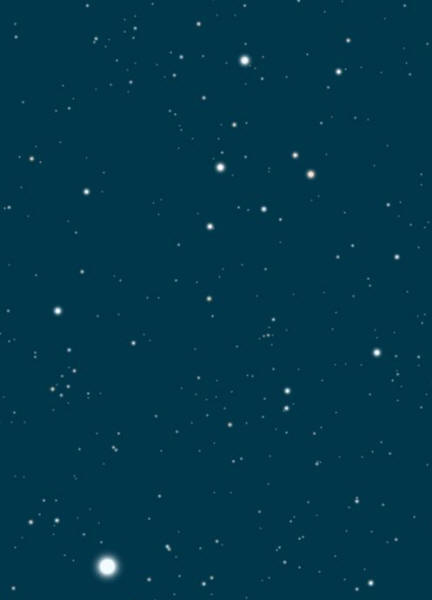 |
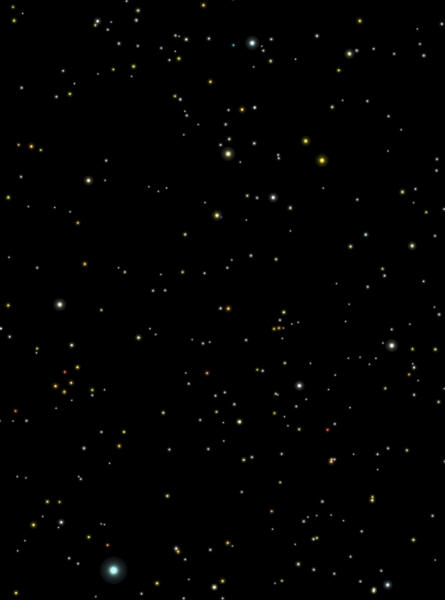 |
The Constellation Lyra
May 15, 2017
This image of the constellation Lyra was captured at 11:49 pm EDT on May 15, 2017, from Carranza Field in Wharton State Forest, NJ, with a Canon 7D Mark II digital SLR camera, on a fixed tripod, and a Yongnuo 85 mm f/1.8 lens (providing a field 15░ wide x 10░ high). It's a single frame exposed 4 seconds at f/2.8, ISO 6400, with white balance set to 3800K. Besides size reduction for this web page, no post-exposure adjustments were made. Mouseover for labels.
This is mainly a test of the fast, but inexpensive prime lens. Alas, it shows violet halos around brighter stars here, and it's even worse wide open at f/1.8. Cursory testing shows that at least f/4 is needed to keep the violet halos under control, which diminishes the value of the fast maximum aperture. However, the large aperture does help with composition and manual focusing of a night sky scene in live view mode. Limited testing on ordinary photo subjects suggests the autofocus is noisy, sluggish and uncertain, but I haven't evaluated the effect of violet fringes yet. Update: On May 26, I took a quick snapshot of my friend Bernie during twilight at Tatem Observatory with the 85 mm Yongnuo on the 7D2 (auto-exposed 1/125 sec at f/2, ISO 3200; besides size reduction, no adjustments). Not too bad for a handheld grab shot.
The image below is a magnifying crop of the original image above, better showing the stars Vega, T Lyrae (a reddish carbon star) and Epsilon Lyrae, the "Double Double." Again, besides cropping and resizing for this page, no adjustments were made (such as brightness and contrast). Mouseover for labels.
This magnifying crop of the first image shows the area around M57, the greenish Ring Nebula. Mouseover for labels.
The Moon and Jupiter
May 7, 2017
On May 7, 2017, the 11.7 day old, 93% illuminated waxing gibbous Moon passed less than 2░ from Jupiter before sunset. This picture of them is a single frame captured at 11:54 pm EDT when they were 3.0░ apart. It was taken with a Canon 7D Mk II digital SLR camera (handheld) and a Sigma 70 to 300 mm f/4-5.6 apo zoom lens set to 300 mm focal length, then cropped to a 16:9 ratio (0.91 wide x 0.77 high) yielding a field 3.9░ wide x 2.2░ high. It was exposed 1/1000 second at f/8, ISO 800, with daylight white balance. Some modest adjustments were made to the brightness and contrast, otherwise Jupiter (bottom right) would be barely visible.
The image below was cropped from the same original image as the one above, with fresh adjustments to brightness, contrast and white balance.
C/2015 V2 (Johnson)
May 4, 2017
At Carranza Field in Wharton State Forest, NJ, on May 4, 2017, there was a brief window of full darkness between moonset at 2:51 am EDT and the start of astronomical twilight at 4:11 am. With a currently-clear sky and a poor weather forecast for the next few nights, plus a later-setting moon closing the window of darkness anyway, I decided to take advantage of the opportunity to look at comets 41P/Tuttle-Giacobini-Kresak and C/2015 V2 (Johnson). I arrived at 2:40 am, and by 2:45 am, spotted both comets with handheld 16x70 binoculars, 41P about 4░ from Vega and Johnson near the western foot of Hercules (although it had recently crossed the border into northeastern Bo÷tes). 41P was not prominent as its low surface brightness coma was somewhat overwhelmed by magnitude 4.3 Kappa Lyrae less than half a degree away. Except for being close to the zenith, which is a difficult direction for handheld binoculars while standing, the view of Johnson was the best I've seen so far. The coma was plainly visible, unlike the vague glow on previous sightings. It may have been enhanced somewhat by its coma overlapping the vertex of a small equilateral triangle of 11th magnitude stars.
The picture above includes C/2015 V2 (Johnson). Mouseover for labels. It's a single frame taken at 3:38 am EDT with a Canon 7D Mk II digital SLR camera and a Canon 100 mm f/2.8L macro lens (on a fixed tripod), uncropped for a field 12.8░ wide x 8.6░ high. It was exposed 6 seconds at f/2.8, ISO 12800, using 3600K white balance.
The
Summer Triangle
May 4, 2017
While at Carranza Field on May 4, 2017, to look for the comets, I couldn't help but notice the Milky Way running from Cepheus through the Summer Triangle then down towards Sagittarius in the south, and visually, it bordered on being billowing. I wanted to take some test pictures with a new combination of camera and lenses anyway, so this was a good place to start. It's a single frame taken at 3:05 am EDT with a Canon 7D Mk II digital SLR camera (on a fixed tripod) and a Sigma 20 mm f/1.4 Art lens, uncropped for a field 58░ wide x 41░ high. It was exposed 8 seconds at f/2.0, ISO 3200, using 3600K white balance. Mouseover for labels.
Looking South at Carranza
May 4, 2017
After imaging the Summer Triangle at Carranza Field on May 4, 2017, my attention was drawn to the Galactic Center of the Milky Way above the southern horizon. The respective cloud of stars was rising like celestial steam from the Teapot asterism of Sagittarius, with competition from light pollution out of Atlantic City and Hammonton near the tree line. This is a single frame taken at 3:14 am EDT with a Canon 7D Mk II digital SLR camera (on a fixed tripod) and a Sigma 20 mm f/1.4 Art lens, uncropped for a field 58░ wide x 41░ high. It was exposed 8 seconds at f/2.0, ISO 1600, using 3600K white balance. Mouseover for labels.
Here's another view of the Galactic Center of the Milky Way from Carranza Field on May 4, 2017. This is a single frame taken at 3:20 am EDT with a Canon 7D Mk II digital SLR camera (on a fixed tripod) and a Tokina 12-28 mm f/4 zoom lens set to 12 mm focal length, uncropped for a field 86░ wide x 64░ high. It was exposed 15 seconds at f/4.0, ISO 3200, using 3600K white balance. Mouseover for labels.
Click here for some older images.
